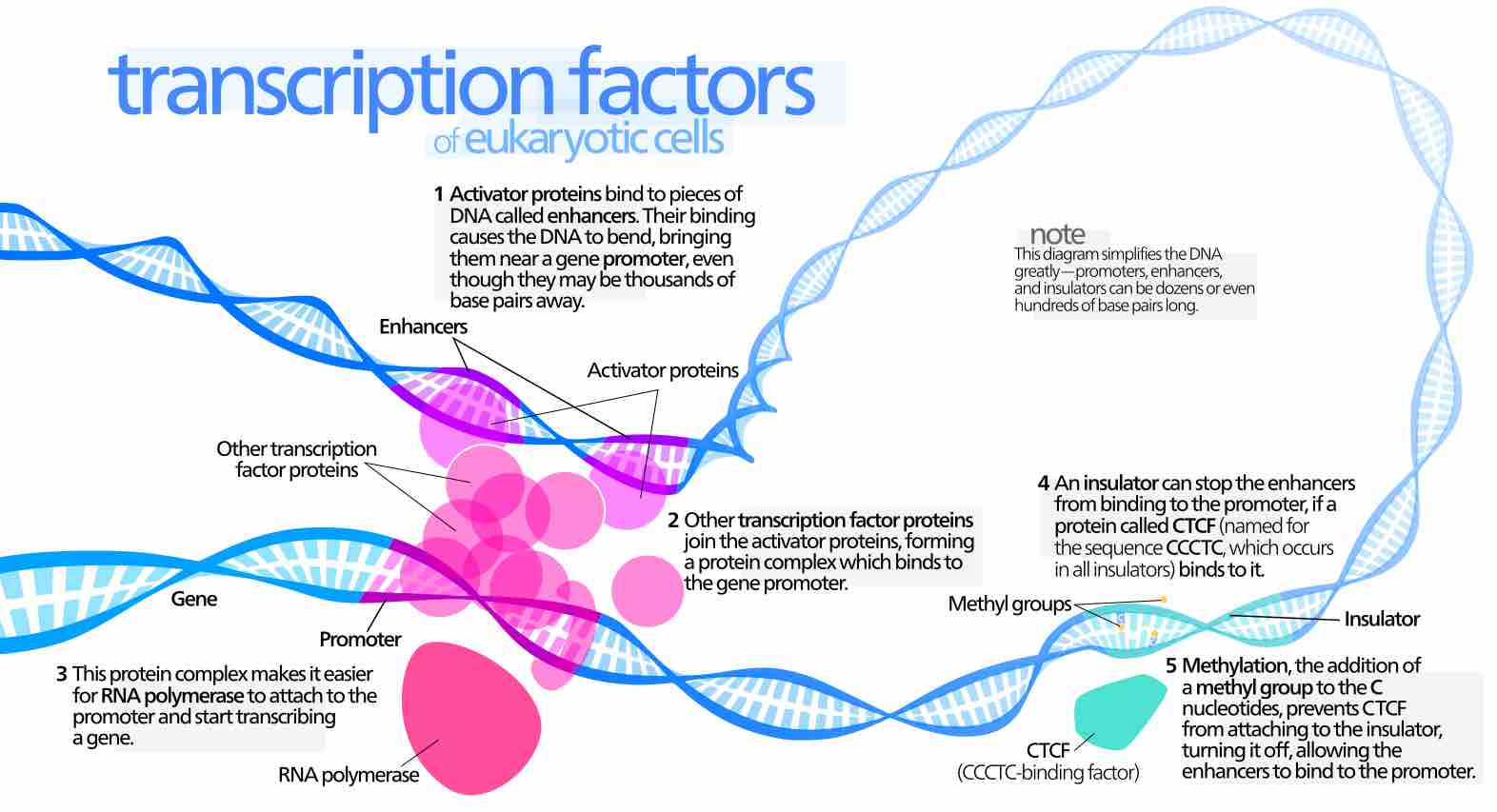Cancer and Transcriptional Control
Many transcription factors, especially some that are proto-oncogenes or tumor suppressors, help regulate the cell cycle and, as such, determine how large a cell will get and when it can divide into two daughter cells . Alterations in cells that give rise to cancer can affect the transcriptional control of gene expression. Mutations that activate transcription factors, such as increased phosphorylation, can increase the binding of a transcription factor to its binding site in a promoter. This could lead to increased transcriptional activation of that gene that results in modified cell growth. Alternatively, a mutation in the DNA of a promoter or enhancer region can increase the binding ability of a transcription factor. This could also lead to the increased transcription and aberrant gene expression that is seen in cancer cells.

Transcription Factors
Transcription factors, especially some that are proto-oncogenes or tumor suppressors, help regulate the cell cycle; however, when regulation gives rise to cancer cells, then transcriptional control of gene expression is affected.
Researchers have been investigating how to control the transcriptional activation of gene expression in cancer. Identifying how a transcription factor binds, or a pathway that activates where a gene can be turned off, has led to new drugs and new ways to treat cancer. In breast cancer, for example, many proteins are overexpressed. This can lead to increased phosphorylation of key transcription factors that increase transcription. One such example is the overexpression of the epidermal growth factor receptor (EGFR) in a subset of breast cancers. The EGFR pathway activates many protein kinases that, in turn, activate many transcription factors that control genes involved in cell growth. New drugs that prevent the activation of EGFR have been developed and are used to treat these cancers.